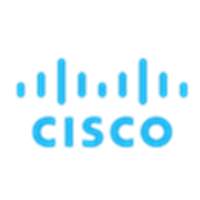
Cisco
View Brand PublisherWhy the classrooms must go digital and how
There’s a talk by an eminent international professor at your university and you are excited to attend. But your campus is spread out over a few acres, and you find it difficult to locate the lecture hall. By the time you do, you have missed a few minutes of the talk.
Let’s reverse the scenario.
You are invited by a top university to deliver a talk. You arrive at the university on time, but getting a parking space is an issue. Once that is sorted, you are don’t know the way to the venue. You try to call your coordinator but can’t reach him or her over the phone.
Now, let’s look at a regular classroom scenario.
An interesting class has just concluded. You want to revisit the teachings to see if you have missed out on any key pointers. The only option you have is to rely on your memory or refer to a classmate’s notes.
Now, yet again, let’s reverse the scenario.
As a professor, once you are done with delivering the lecture, you want students to take time to go through the learnings, so that you can answer their queries before the next session. But, there aren’t any avenues to help you do that effectively.
It is these kind of simple, everyday, scenarios that will get overhauled as digitalisation of education becomes a reality. Today, every aspect of our lives, from the way we travel, shop or eat, has changed, and with digitalisation gaining ground in the education sector, the way students study or educators teach is also rapidly changing.
Three questions that can help educational institutions embrace digitalisation more effectively

Digital disruption in education has meant that educational institutions are warming up to digital learning. Yet, it is here that many fail. The reason? In a bid to speed up and digitalise their learning environment, traditional educational institutions are often seen adopting discrete technology solutions in silos that do not deliver anticipated outcomes.
To avoid this pitfall, a primary course of action for educational institutions is to focus on three simple questions:
- What digital strategies can help a student learn better?
- What digital strategies can help a teacher teach better?
- How can we build intelligent, safe and smart campuses?
Answering these will help educational institutions, both universities and schools, plan and build a digital learning platform that can offer an engaging and collaborative learning environment.
The yin and yan of digitalisation of education
Ironically, a lot of traditional institutions equate digitalisation of education with enabling virtual classrooms or equipping the campus with better Wi-Fi. While these are critical components, there’s more to digitalisation in the context of education.
The two broader scopes to evaluate digital readiness are – Digital Learning and Digital Campus.

Digital Learning
Today, education is no longer confined to the physical boundary of a school or college as access to digital platforms enable continuous and effective learning. From assigning pre-work, recording live videos, or answering student queries, both students and teachers want a digital platform that has the capability to become a single window of engagement at every stage of learning – be it before, during or after every class.
Digital learning focuses on enhancing the quality and innovation of teaching and learning, and accelerating productivity and collaboration.
This can be realised in multiple ways. For instance, just by leveraging the trend of BYOD (Bring Your Own Device) and blending that with requisite mobility and security infrastructure, educational institutions can enable a seamless process of anytime, anywhere, any device, any resource learning, albeit through secure means. By leveraging virtual classrooms, educational institutions can support new online learning experiences, empower students to learn on demand from any location, and eliminate the boundaries that limit a student's ability to learn. For instance, students sitting in two different continents and two different universities can connect and engage regularly. Virtual classrooms can make it possible for the students to interact with professionals who they wouldn’t otherwise get to meet in person. In short, digital learning can maximise the learning potential of students and help to take learning beyond the classroom walls.
Digital Campus
The other important part of digitalisation of education is creating a Digital Campus. In its simplest definition, a digital campus is one that continually enables campus administration and management to enhance their operational efficiency and provides an enhanced stakeholder experience. From infrastructure such as auto-attendance, smart parking or energy management, to tracking emotions for improved student engagement to technology enabling an engaging pedagogy, a digital campus is all about creating smart workspaces that drive productivity using smart services in a smart campus. In short, a digital campus goes way beyond the purview of pure academic objectives, but ultimately helps to build a conducive learning environment.
Technologies that can help in digitalisation of education
Be it enabling anytime-anywhere access to learning tools, facilitating collaboration with peers, educators, or global industry experts, creating a sustainable campus or a safe and secure physical and virtual campus environment, you need to opt for the right technology to achieve the desired objectives. This is where Cisco’s expertise will help in bringing your vision to life.
Cisco’s Digital Education Platform integrates educational solutions, services, and partner capabilities to connect classrooms and learning spaces across campuses, schools, and districts, creating secure virtual classrooms, simplifying IT management and supporting and enhancing cybersecurity to improve the student, educator, and administrator experience. It enables educators and students to teach and learn in new ways, in new places, and extends the walls of the traditional classroom to a new way of learning.
Here are a few core CISCO technology solutions that can help educational institutions in their digitalisation journey
Presence Analytics and Campus Navigator
This tool enables the better utilisation of facilities during peak hours by sharing data related to faculty-wise consumption details of the facilities in the campus. The tool also helps students, staff and visitors find their way to classrooms, lecture halls and events.
Auto attendance
On an average, faculty members waste approximately 20 percent of their time taking manual attendance. In addition they also have to deal with issues such as proxy attendance and audit issues. The auto attendance solution not only automates attendance but ensures that a digital footprint is created to manage audit issues and disputes. Students also get real-time view of their attendance status.
Virtual and Remote Learning
Traditional classroom learning provides little or no opportunity to personalise learning. Also, the costs for customised class sessions are high in a regular setting. But virtual and remote learning tools open the doors for personalised as well as continuous learning and help provide anytime anywhere access to classrooms. Cisco has a unique capability to provide a blended learning solution including Hardware as well as Software
Seamless Learning
The Seamless Learning platform helps maximise the potential for learning and teaching by using innovative and accessible extended learning environments (i.e. blended or distance learning). It does away with the time-bound interaction barriers and opens doors to collaborative learning. Learning is no more confined to the scheduled lecture time
Connected Safety and Security (CSS)
It is extremely important to keep students and faculties safe within the campus in addition to providing them tools to be productive. Cisco Connected Safety and Security solutions are not passive surveillance systems but intelligent enough to sense potential threats and take actions by means of sending alerts to the assigned stakeholders if required, while seamlessly integrating with existing Cisco network. This helps campuses be better equipped and prepared in case of emergencies.
Smart campus
Today, the problems of managing an educational institution’s campus and its facilities are multi-layered and varied. While many of the routine tasks have been digitised and automated, there are some obvious gaps such as lack of connectivity and data analytics for decision-making, lack of integration of multiple discrete technology solutions which have been implemented in the campus and lack of a single dashboard to view campus infrastructure. The Smart Campus solution helps plug such gaps and thereby enables institutions to optimise their campus facilities through connectivity (be it usage of lights in the classrooms only when the classes are underway or managing the parking facility), fosters a safe and secure physical and virtual campus environment and also reduces infrastructural overheads.







